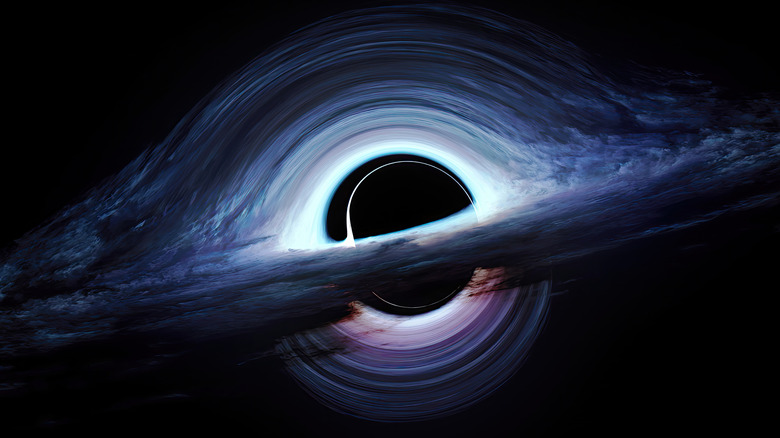The James Webb Space Telescope Discovered A Supermassive Black Hole
A team of astronomers has discovered a supermassive black hole that is 100 million times the mass of the sun. This impressive discovery was found using the powerful James Webb Space Telescope's (JWST) infrared eye. The research team believes this black hole existed during cosmic noon, a term used to refer to the time period 4 billion years after the Big Bang — of which there is now a new model to try to explain the origins of the universe.
The JWST has helped to discover what are referred to as little red dots. They are points of light from the early cosmos that aren't fully understood. Given the sheer size of this supermassive black hole, the researchers have referred to it as the BiRD, or Big Red Dot.
This discovery was published in the Astronomy & Astrophysics journal in October 2025 under the title "A big red dot at cosmic noon". This study brought together an international team of researchers from such organizations as Space Telescope Science Institute for the European Space Agency, Yale University, and the University of Cambridge. Their findings could help to better understand the nature of the red dots the JWST is discovering, and to broaden our knowledge of the early cosmos.
What have we learned about this supermassive black hole?
Researchers using the James Webb Space Telescope have uncovered these little red dots that show signs of massive black holes millions of times the Sun's mass — and supermassive black holes are surprisingly common — but these red dots barely emit X-rays or radio waves, which is very unusual. To understand them better, astronomers are now studying examples at different distances in the universe which includes this supermassive black hole BiRD. It existed during cosmic noon, a time of fast growth for both galaxies and black holes.
To understand what's going on inside the newly found BiRD, the research team analyzed its light in detail. They broke the light into different components, such as light coming from fast-moving gas close to the black hole versus light from slow-moving gas further out. They then looked for both emission and absorption features. Their analysis suggested very dense, turbulent material close to the black hole.
Because the BiRD has similar properties to the little red dots, the researchers used overlapping features to estimate how bright it is. They calculated that the object's total energy output was typical for a growing black hole of this size. However, when they checked X-ray and radio data, the object was practically invisible. This suggests that these red dots behave very differently from what is expected and opens up a new line of research for the future.
What future research could be done regarding black holes
One possible explanation for the faint X-ray signature is that an extremely thick cloud of gas is hiding the core of the supermassive black hole. Another theory is that it might be eating up matter so quickly it forms a thick, puffy disk that blocks or cools the region where X-rays usually form. Future research will have to focus on the behavior of the BiRD and other red dots to better understand what is showing up on the JWST.
The research team has plans for deeper observations across multiple wavelengths. They also hope to search larger areas of the sky for more examples like the BiRD, which will make it easier to pin down how unusual these objects really are. For now, this supermassive black hole remains a bit of a mystery and an intriguing find.
Understanding the BiRD and black holes in general can further our knowledge of our galaxy's own black hole. Don't worry, though, our solar system shouldn't fall into it. Black holes continue to fascinate astronomers and the public in general, and we can look forward to the future when the JWST helps us find out more about the BiRD and other black holes like it.


